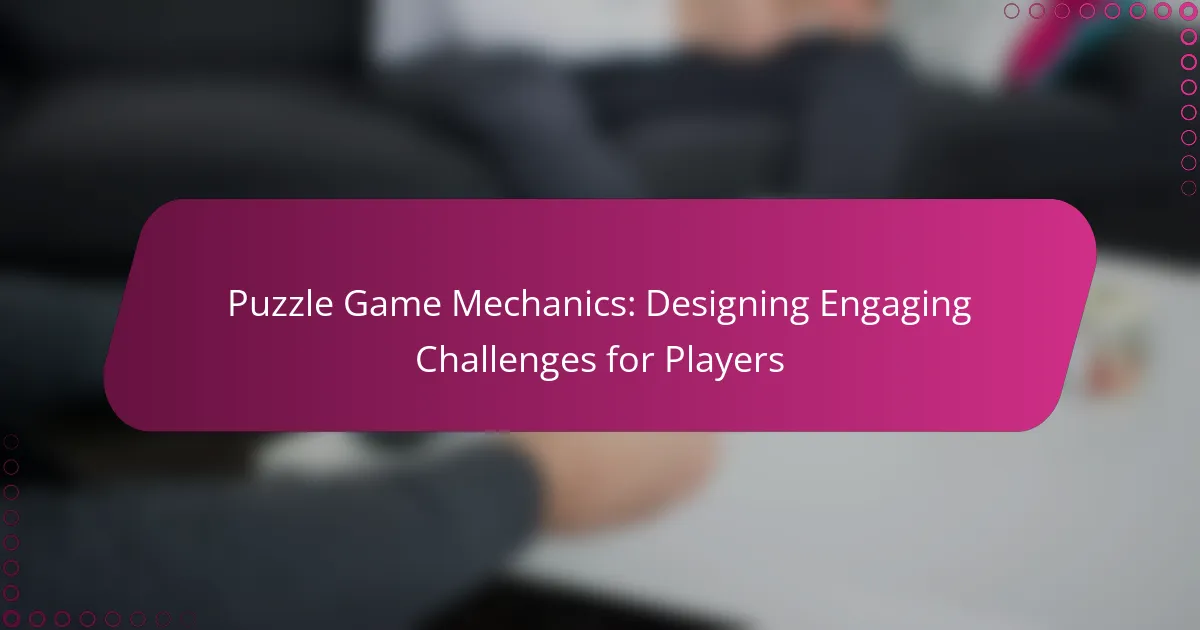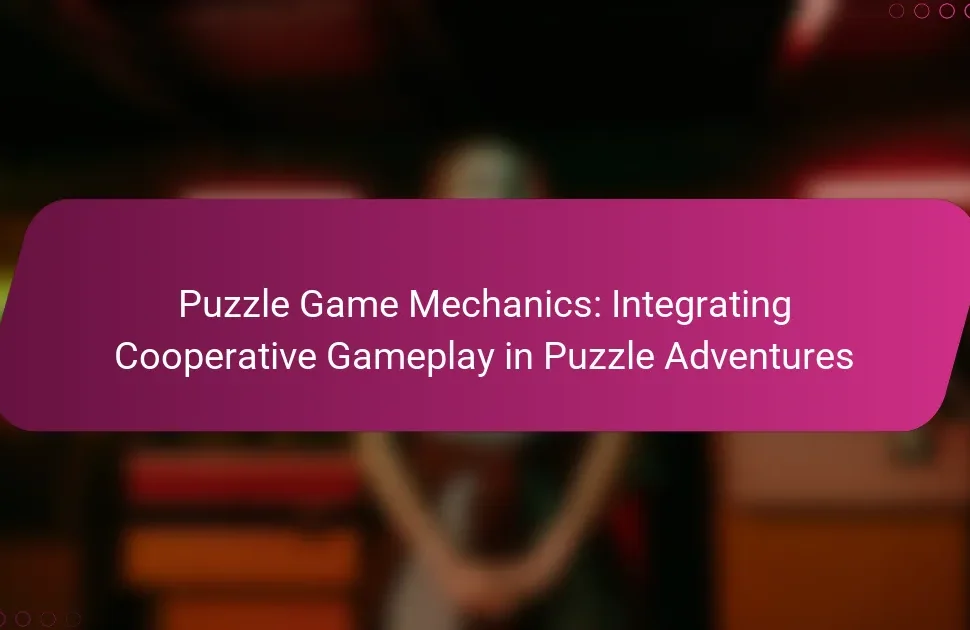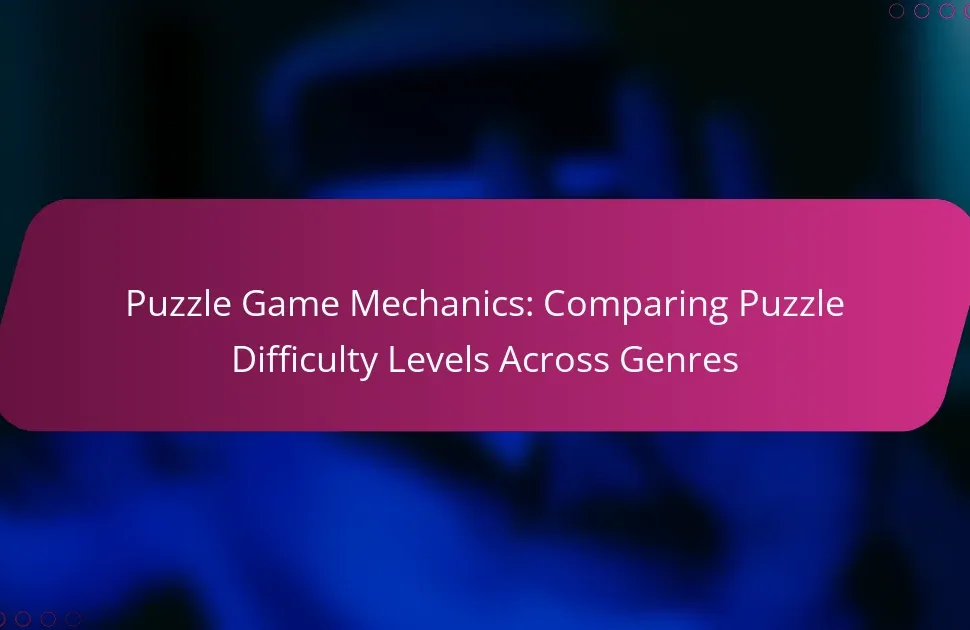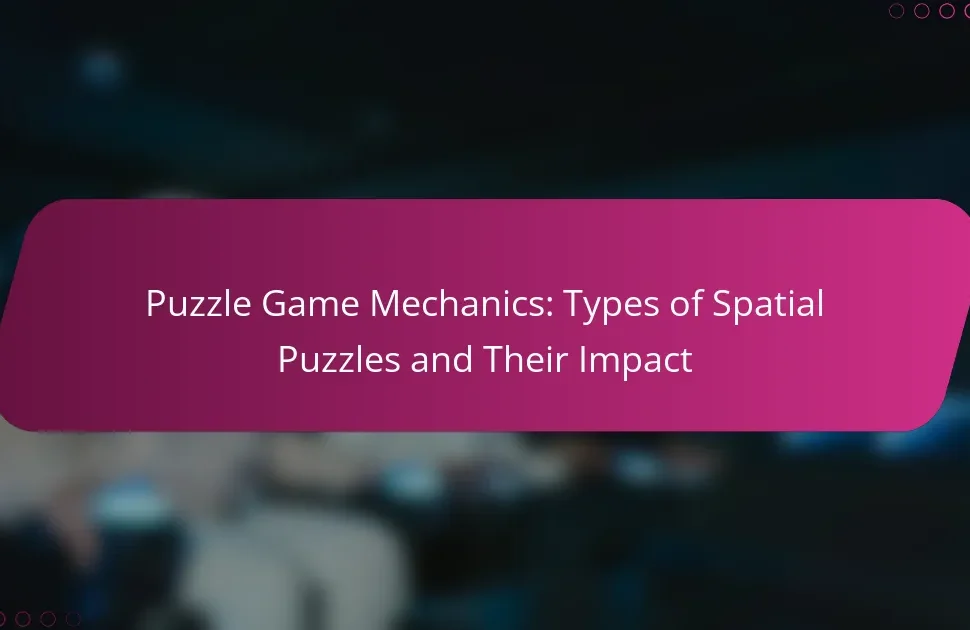Puzzle game mechanics are essential for creating engaging challenges that enhance problem-solving skills and creativity. This article explores key mechanics like spatial reasoning, pattern recognition, and resource management. It examines how different genres utilize these mechanics to offer unique gameplay experiences. Additionally, it discusses the impact of cultural differences on player preferences and highlights innovative trends shaping the future of puzzle game design.
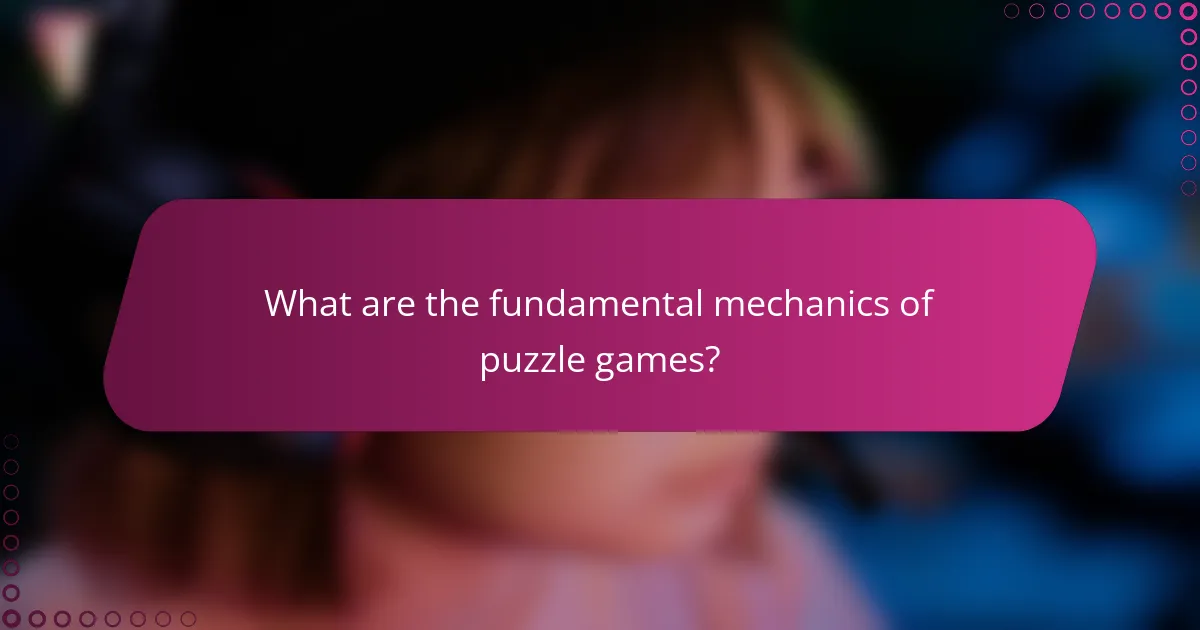
What are the fundamental mechanics of puzzle games?
Puzzle games engage players through mechanics that challenge problem-solving skills, logic, and creativity. Key mechanics include spatial reasoning, pattern recognition, and resource management. Each mechanic contributes to the overall experience by creating unique challenges that vary in difficulty and complexity.
Spatial reasoning involves manipulating objects within a defined space, enhancing players’ understanding of dimensions and relationships. Pattern recognition allows players to identify sequences or shapes, fostering critical thinking and strategic planning. Resource management requires players to allocate limited resources effectively, adding a layer of strategy to gameplay.
These mechanics create a dynamic environment where players can explore, experiment, and develop their skills. Engaging puzzle games often combine multiple mechanics to maintain player interest and provide a rewarding experience.
How do puzzle mechanics enhance player engagement?
Puzzle mechanics significantly enhance player engagement by providing stimulating challenges that encourage critical thinking and problem-solving. These mechanics foster a sense of accomplishment when players overcome obstacles, leading to increased satisfaction and retention.
Incorporating varied puzzle types, such as logic puzzles, pattern recognition, and spatial reasoning, can cater to diverse player preferences. This variety keeps gameplay fresh and exciting, as players encounter new challenges that require different strategies.
Additionally, well-designed puzzles can promote collaboration among players, especially in multiplayer settings. Cooperative puzzle-solving enhances social interaction, creating a shared experience that deepens player investment in the game.
Finally, the gradual increase in puzzle difficulty can maintain player interest over time. By starting with simpler challenges and progressively introducing more complex ones, players feel a continuous sense of growth and achievement, which is crucial for long-term engagement.
Which cognitive skills do puzzle games develop?
Puzzle games develop various cognitive skills, including problem-solving, critical thinking, and spatial reasoning. These games challenge players to analyze situations, recognize patterns, and devise strategies. As a result, players enhance their ability to think logically and improve their memory retention. Engaging with diverse puzzles also fosters creativity and adaptability, making these games valuable for cognitive development.
What role does difficulty scaling play in player retention?
Difficulty scaling significantly enhances player retention by providing a balanced challenge that keeps players engaged. When puzzles adapt to a player’s skill level, they feel a sense of accomplishment without excessive frustration. This dynamic encourages continued play and exploration within the game.
Moreover, effective difficulty scaling can lead to varied gameplay experiences. Players encounter unique challenges that cater to their evolving skills, promoting a sense of progression. As a result, they are more likely to return to the game to tackle new obstacles.
Additionally, implementing difficulty scaling can foster community engagement. Players often share strategies and tips on overcoming challenging levels, creating a supportive environment. This social interaction can further increase retention rates as players feel connected to the game and its community.
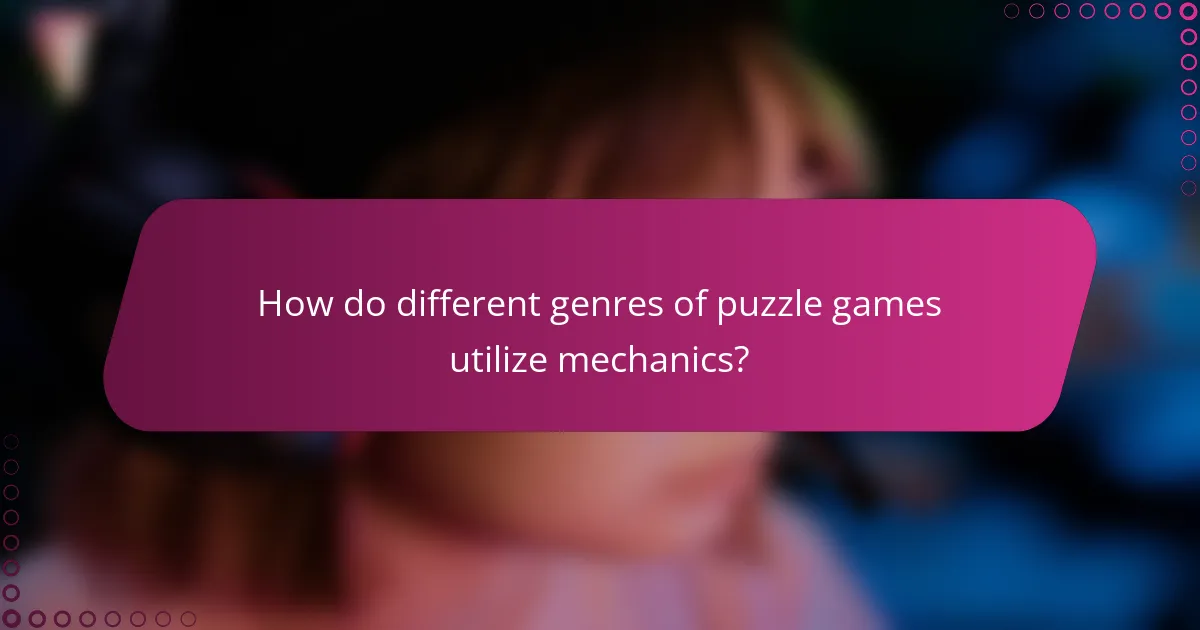
How do different genres of puzzle games utilize mechanics?
Different genres of puzzle games utilize mechanics to create unique gameplay experiences. Each genre employs specific mechanics to challenge players and enhance engagement.
Match-three games often use tile-matching mechanics, requiring players to align three or more identical items. This simple yet addictive mechanic promotes strategic thinking and quick decision-making.
Physics-based puzzle games implement real-world physics to solve challenges. Players manipulate objects to achieve objectives, fostering creativity and problem-solving skills.
Logic puzzles focus on deduction and reasoning. Players must analyze clues and relationships to arrive at solutions, enhancing cognitive abilities and critical thinking.
Escape room games combine various mechanics, including item collection and environmental interaction. Players solve interconnected puzzles within a time limit, promoting teamwork and time management.
What are the mechanics unique to match-3 games?
Match-3 games feature unique mechanics that enhance player engagement. These include tile-matching, cascading effects, power-ups, and time-limited challenges.
Tile-matching is the core mechanic where players swap adjacent tiles to create matches of three or more. This action triggers a chain reaction, leading to cascading effects where new tiles fall into place, potentially creating additional matches.
Power-ups are special tiles or combinations that offer enhanced abilities, such as clearing entire rows or columns. Time-limited challenges add urgency, encouraging quick decision-making and strategic planning.
These mechanics work together to create a dynamic gameplay experience that keeps players returning for more.
How do logic puzzles differ in their approach to player challenges?
Logic puzzles challenge players through deductive reasoning and problem-solving skills. They often require critical thinking to identify relationships and patterns. Unlike other puzzle types, logic puzzles focus on structured scenarios where players derive solutions from given clues. This structured approach emphasizes analytical skills, making them distinct from more abstract or free-form puzzles. Additionally, they often present a unique attribute of having a single correct solution, enhancing the satisfaction of solving them.
Which mechanics are commonly found in escape room games?
Escape room games commonly feature mechanics such as puzzles, riddles, physical challenges, and narrative elements. These mechanics engage players by requiring critical thinking, teamwork, and problem-solving skills.
Puzzles often include logic problems, pattern recognition, and word games. Riddles challenge players with cryptic clues and require lateral thinking. Physical challenges might involve manipulating objects or navigating spaces, adding a tactile dimension. Narrative elements enhance immersion, providing context and motivation for the challenges.
Overall, these mechanics create a dynamic and interactive experience that captivates players and encourages collaboration.
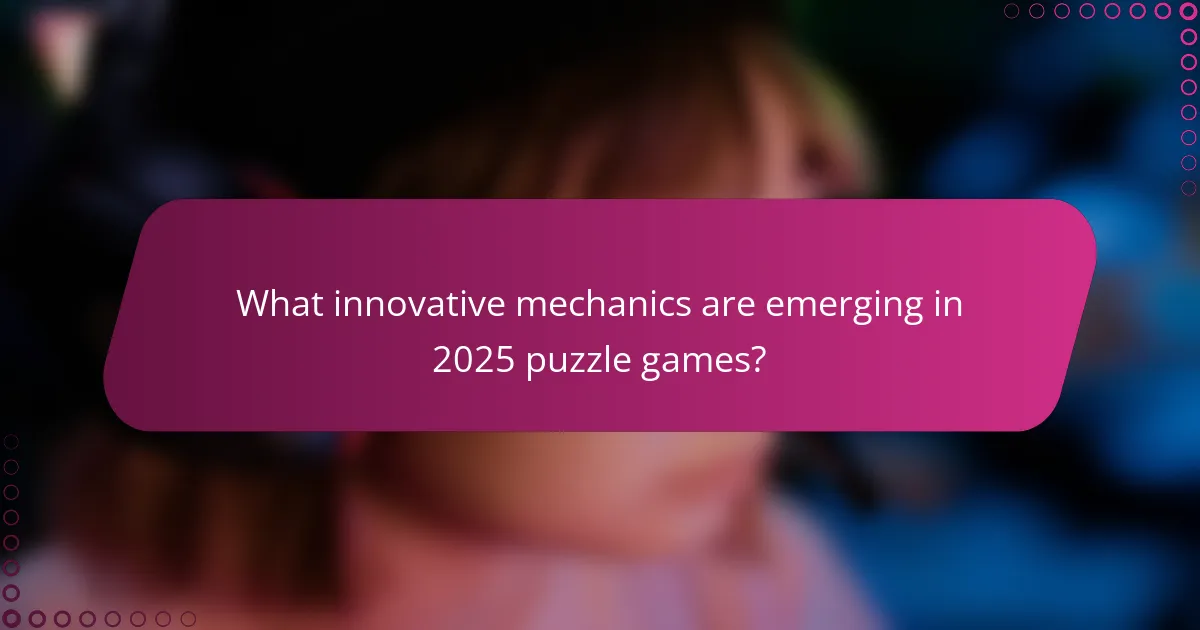
What innovative mechanics are emerging in 2025 puzzle games?
Innovative mechanics in 2025 puzzle games focus on immersive experiences and adaptive challenges. These games utilize AI-driven dynamics for personalized gameplay, ensuring players face unique obstacles tailored to their skills. Cooperative puzzle-solving mechanics promote social interaction, enhancing engagement through teamwork. Additionally, augmented reality integration allows players to interact with puzzles in real-world settings, creating a more dynamic and immersive experience. Advanced narrative elements intertwine with puzzles, offering deeper storytelling that motivates players to progress.
How is augmented reality influencing puzzle design?
Augmented reality is transforming puzzle design by creating immersive, interactive experiences. It enhances player engagement through real-world integration and dynamic challenges. This technology allows puzzles to blend physical and digital elements, making problem-solving more intuitive and enjoyable. For example, players can manipulate virtual objects overlaid on their environment, increasing the complexity and appeal of puzzles. As a result, augmented reality is not just a trend; it is reshaping how puzzles are conceived and experienced.
What role does artificial intelligence play in puzzle game mechanics?
Artificial intelligence enhances puzzle game mechanics by creating adaptive challenges and personalized experiences. AI algorithms analyze player behavior, adjusting difficulty levels and providing hints tailored to individual skills. This dynamic interaction keeps players engaged and motivated. Additionally, AI can generate unique puzzles, ensuring a fresh experience with each gameplay session. By leveraging data, developers can optimize game flow, making puzzles more intuitive and enjoyable.
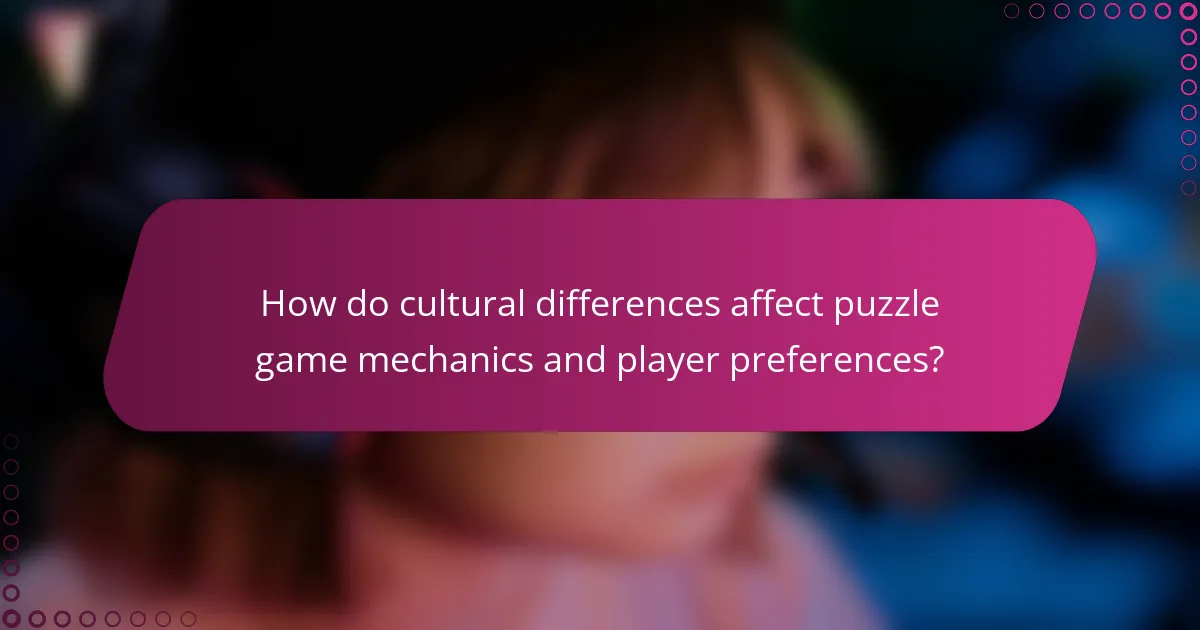
How do cultural differences affect puzzle game mechanics and player preferences?
Cultural differences significantly shape puzzle game mechanics and player preferences. For instance, players from collectivist cultures may prefer cooperative puzzles, while those from individualistic cultures may enjoy competitive challenges.
Cultural symbolism influences puzzle themes, such as colors, animals, and stories. This affects how players engage with challenges. Additionally, varying cognitive styles across cultures impact problem-solving approaches, leading to diverse preferences in puzzle complexity and mechanics.
Game designers must consider these factors to create engaging experiences that resonate with a global audience. Understanding cultural nuances enhances player satisfaction and retention.
Which puzzle mechanics resonate more with North American audiences?
Puzzle mechanics that resonate with North American audiences include match-three, physics-based puzzles, and narrative-driven challenges. These mechanics engage players by combining strategy, skill, and storytelling. Match-three games, like Candy Crush, dominate due to their accessibility and addictive gameplay. Physics-based puzzles, such as Angry Birds, appeal to problem-solving skills and creativity. Narrative-driven puzzles, seen in games like The Witness, attract players who enjoy immersive experiences. These mechanics reflect a preference for engaging, varied challenges that enhance player satisfaction.
How do puzzle game preferences vary between UK and Canadian players?
Puzzle game preferences differ between UK and Canadian players based on cultural influences and gameplay styles. UK players often favor narrative-driven puzzles, while Canadian players lean towards innovative mechanics and cooperative gameplay.
Cultural factors shape these preferences. UK players appreciate traditional puzzle formats, reflecting historical influences. In contrast, Canadian players embrace diverse gaming backgrounds, leading to a preference for unique challenges.
Player engagement varies as well. UK players tend to enjoy solo play experiences, while Canadian players often seek multiplayer options. This difference affects game design strategies, focusing on narrative for UK and mechanics for Canada.
Understanding these variances helps developers create tailored experiences that resonate with each audience, enhancing player satisfaction and retention.
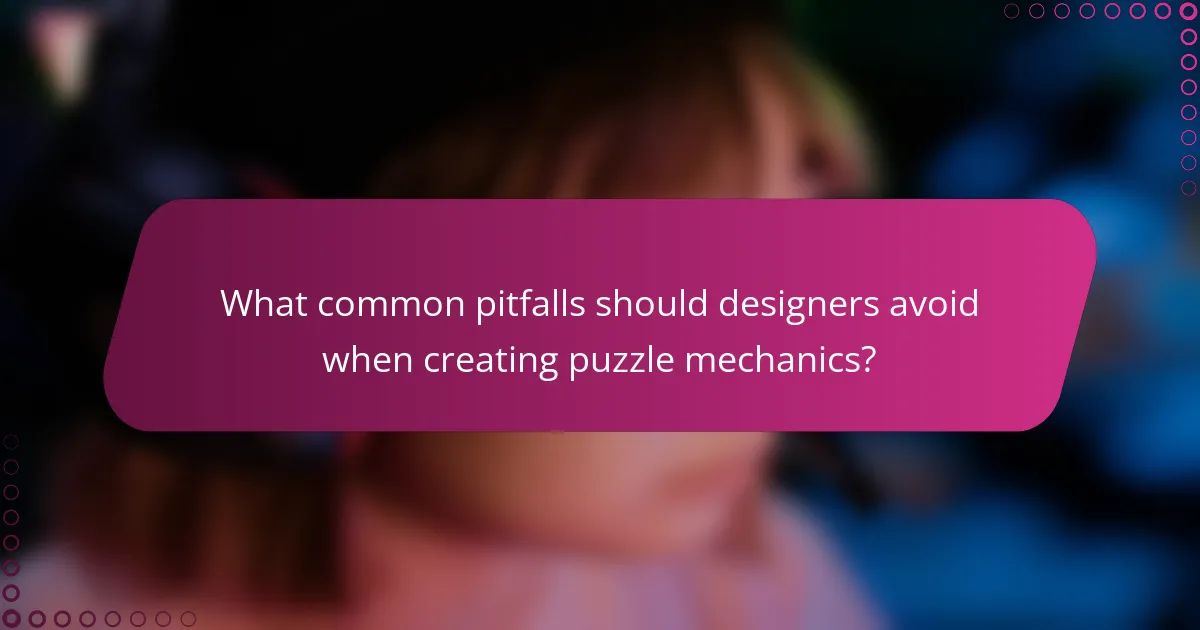
What common pitfalls should designers avoid when creating puzzle mechanics?
Designers should avoid common pitfalls like overcomplicating mechanics, neglecting player feedback, and failing to balance difficulty. Simplistic design enhances engagement, while clear communication of rules fosters understanding. Testing with actual players can reveal issues early, ensuring a smoother experience.
How can overly complex mechanics detract from player enjoyment?
Overly complex mechanics can significantly detract from player enjoyment by causing frustration and confusion. When puzzle game mechanics are too intricate, players may struggle to understand the rules or objectives, leading to disengagement. This complexity can create a barrier to entry, discouraging new players from participating. Additionally, if players spend more time deciphering mechanics than solving puzzles, the intended enjoyment of the game diminishes. Ultimately, simplicity and clarity in design enhance player experience by fostering engagement and satisfaction.
What are the consequences of insufficient tutorial guidance in puzzle games?
Insufficient tutorial guidance in puzzle games can lead to player frustration and disengagement. Without clear instructions, players may struggle to understand mechanics, resulting in decreased enjoyment and increased likelihood of abandoning the game. This lack of guidance can also hinder skill development, preventing players from progressing and mastering challenges. Ultimately, poor tutorial design negatively impacts player retention and overall game success.
Which best practices can enhance puzzle game design?
To enhance puzzle game design, focus on creating immersive mechanics that challenge players effectively. Incorporate diverse difficulty levels to cater to various skill sets, ensuring a balanced progression. Utilize visual and auditory feedback to reinforce player actions, enhancing engagement. Implement innovative puzzle types that encourage critical thinking and exploration. Lastly, prioritize user experience by streamlining controls and providing clear instructions to minimize frustration.
What strategies can be employed to ensure player satisfaction with mechanics?
To ensure player satisfaction with mechanics, designers should focus on clarity, challenge, and feedback. Clear mechanics allow players to understand the game easily. Balancing difficulty keeps players engaged without causing frustration. Providing immediate feedback reinforces learning and enhances satisfaction. Additionally, incorporating player choice fosters a sense of agency and investment in the game.
